Harun Gunaydin
Deep learning-based virtual histology staining using auto-fluorescence of label-free tissue
Mar 30, 2018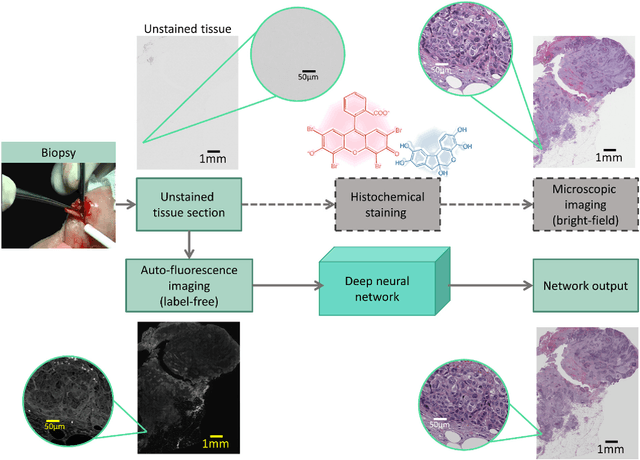
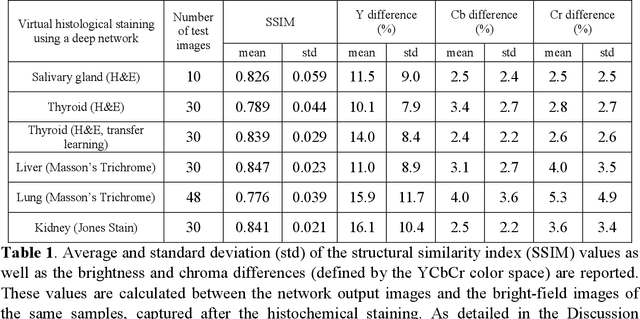
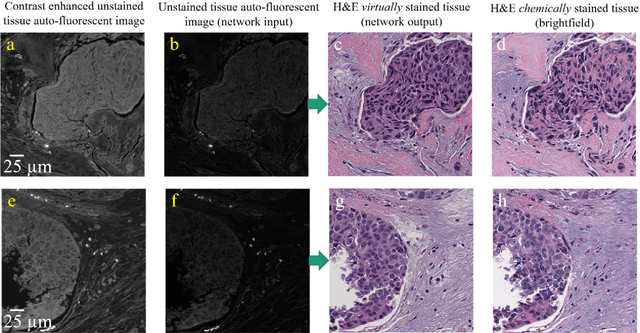

Abstract:Histological analysis of tissue samples is one of the most widely used methods for disease diagnosis. After taking a sample from a patient, it goes through a lengthy and laborious preparation, which stains the tissue to visualize different histological features under a microscope. Here, we demonstrate a label-free approach to create a virtually-stained microscopic image using a single wide-field auto-fluorescence image of an unlabeled tissue sample, bypassing the standard histochemical staining process, saving time and cost. This method is based on deep learning, and uses a convolutional neural network trained using a generative adversarial network model to transform an auto-fluorescence image of an unlabeled tissue section into an image that is equivalent to the bright-field image of the stained-version of the same sample. We validated this method by successfully creating virtually-stained microscopic images of human tissue samples, including sections of salivary gland, thyroid, kidney, liver and lung tissue, also covering three different stains. This label-free virtual-staining method eliminates cumbersome and costly histochemical staining procedures, and would significantly simplify tissue preparation in pathology and histology fields.
Extended depth-of-field in holographic image reconstruction using deep learning based auto-focusing and phase-recovery
Mar 21, 2018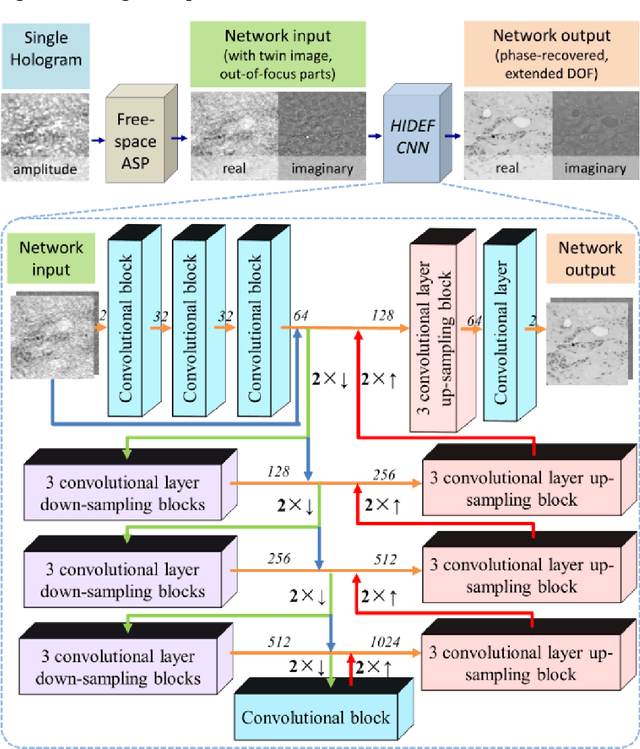
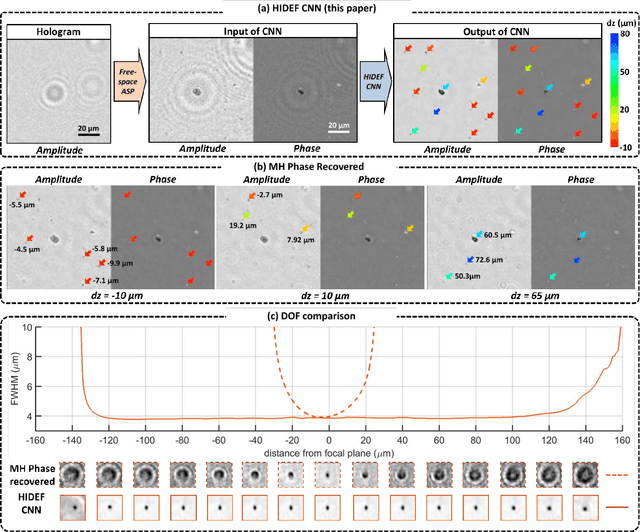
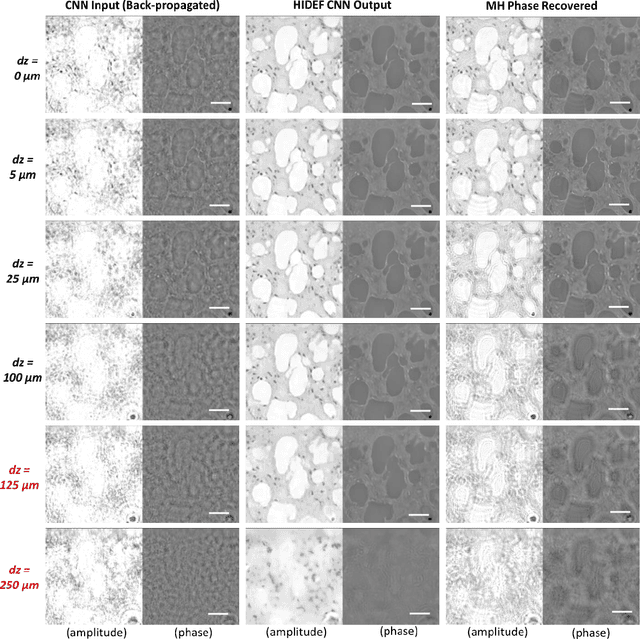
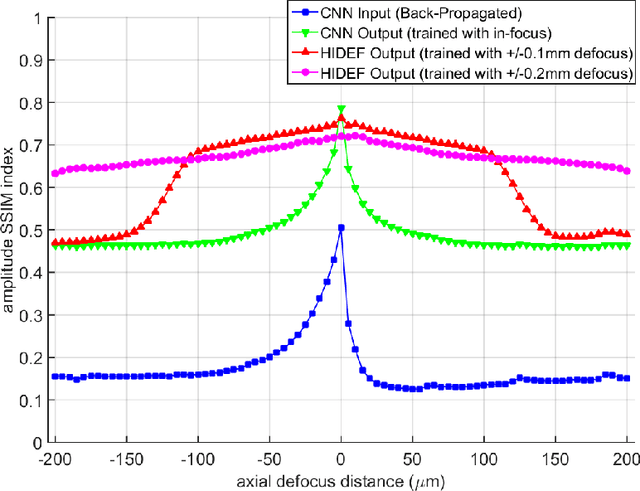
Abstract:Holography encodes the three dimensional (3D) information of a sample in the form of an intensity-only recording. However, to decode the original sample image from its hologram(s), auto-focusing and phase-recovery are needed, which are in general cumbersome and time-consuming to digitally perform. Here we demonstrate a convolutional neural network (CNN) based approach that simultaneously performs auto-focusing and phase-recovery to significantly extend the depth-of-field (DOF) in holographic image reconstruction. For this, a CNN is trained by using pairs of randomly de-focused back-propagated holograms and their corresponding in-focus phase-recovered images. After this training phase, the CNN takes a single back-propagated hologram of a 3D sample as input to rapidly achieve phase-recovery and reconstruct an in focus image of the sample over a significantly extended DOF. This deep learning based DOF extension method is non-iterative, and significantly improves the algorithm time-complexity of holographic image reconstruction from O(nm) to O(1), where n refers to the number of individual object points or particles within the sample volume, and m represents the focusing search space within which each object point or particle needs to be individually focused. These results highlight some of the unique opportunities created by data-enabled statistical image reconstruction methods powered by machine learning, and we believe that the presented approach can be broadly applicable to computationally extend the DOF of other imaging modalities.
Deep learning enhanced mobile-phone microscopy
Dec 12, 2017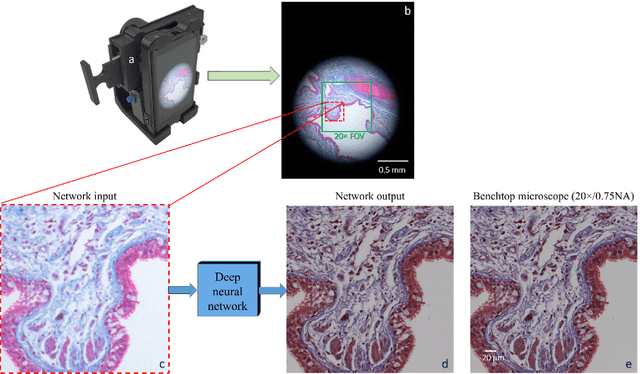
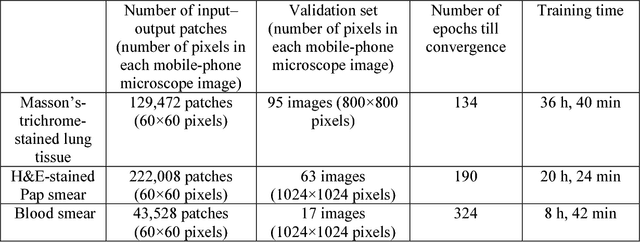
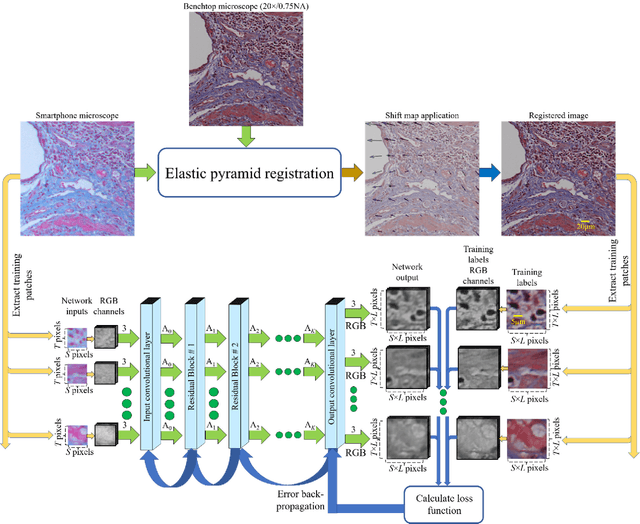
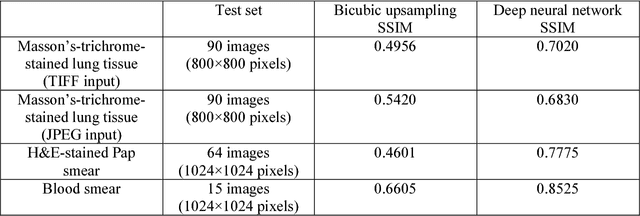
Abstract:Mobile-phones have facilitated the creation of field-portable, cost-effective imaging and sensing technologies that approach laboratory-grade instrument performance. However, the optical imaging interfaces of mobile-phones are not designed for microscopy and produce spatial and spectral distortions in imaging microscopic specimens. Here, we report on the use of deep learning to correct such distortions introduced by mobile-phone-based microscopes, facilitating the production of high-resolution, denoised and colour-corrected images, matching the performance of benchtop microscopes with high-end objective lenses, also extending their limited depth-of-field. After training a convolutional neural network, we successfully imaged various samples, including blood smears, histopathology tissue sections, and parasites, where the recorded images were highly compressed to ease storage and transmission for telemedicine applications. This method is applicable to other low-cost, aberrated imaging systems, and could offer alternatives for costly and bulky microscopes, while also providing a framework for standardization of optical images for clinical and biomedical applications.
Deep Learning Microscopy
May 12, 2017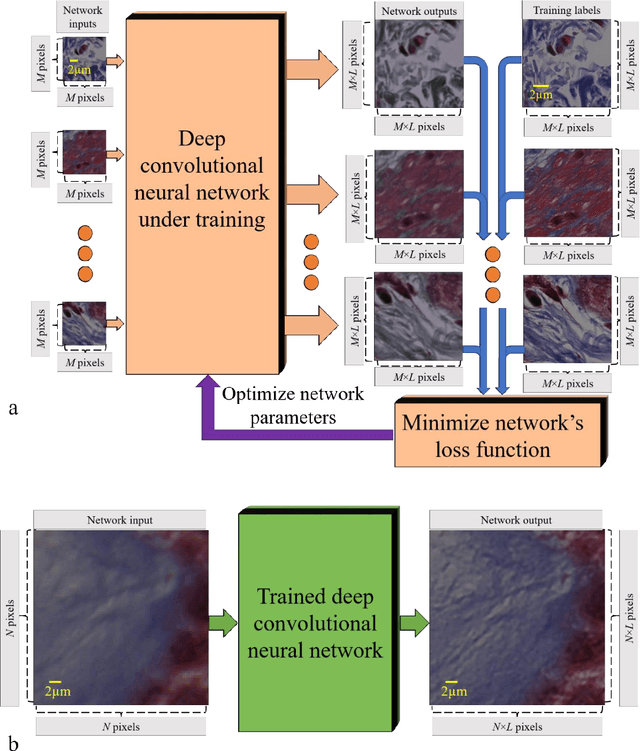
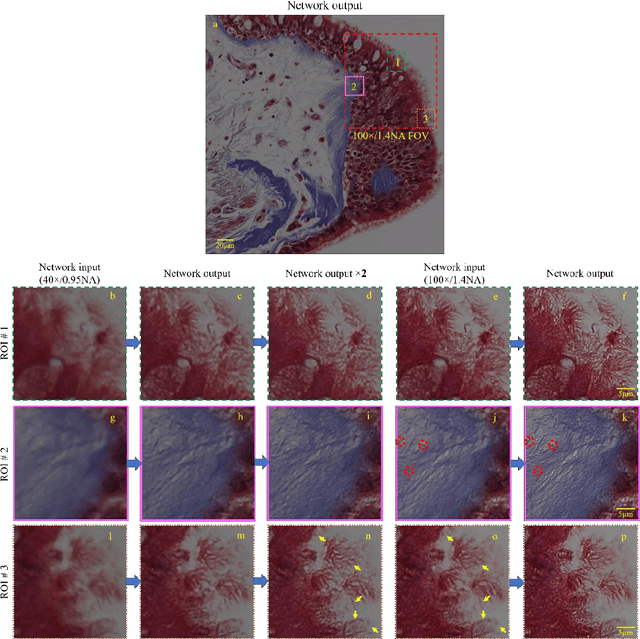
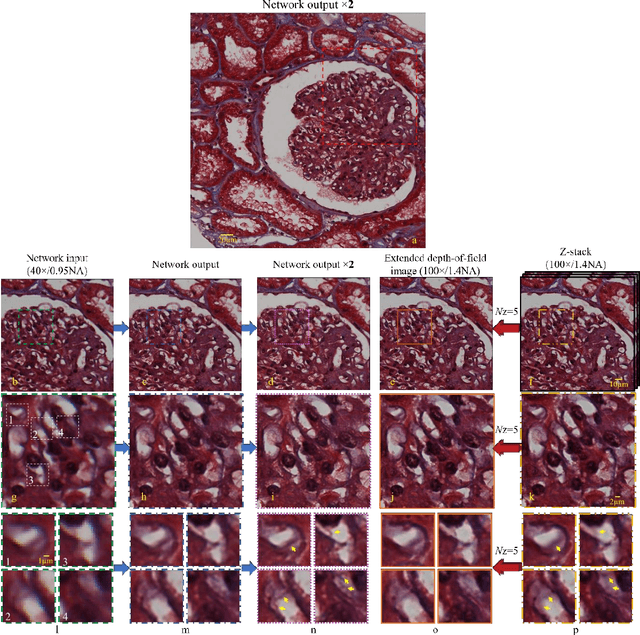
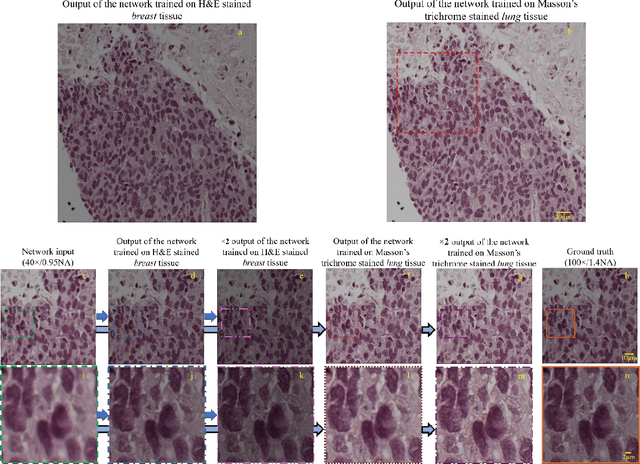
Abstract:We demonstrate that a deep neural network can significantly improve optical microscopy, enhancing its spatial resolution over a large field-of-view and depth-of-field. After its training, the only input to this network is an image acquired using a regular optical microscope, without any changes to its design. We blindly tested this deep learning approach using various tissue samples that are imaged with low-resolution and wide-field systems, where the network rapidly outputs an image with remarkably better resolution, matching the performance of higher numerical aperture lenses, also significantly surpassing their limited field-of-view and depth-of-field. These results are transformative for various fields that use microscopy tools, including e.g., life sciences, where optical microscopy is considered as one of the most widely used and deployed techniques. Beyond such applications, our presented approach is broadly applicable to other imaging modalities, also spanning different parts of the electromagnetic spectrum, and can be used to design computational imagers that get better and better as they continue to image specimen and establish new transformations among different modes of imaging.
Phase recovery and holographic image reconstruction using deep learning in neural networks
May 10, 2017
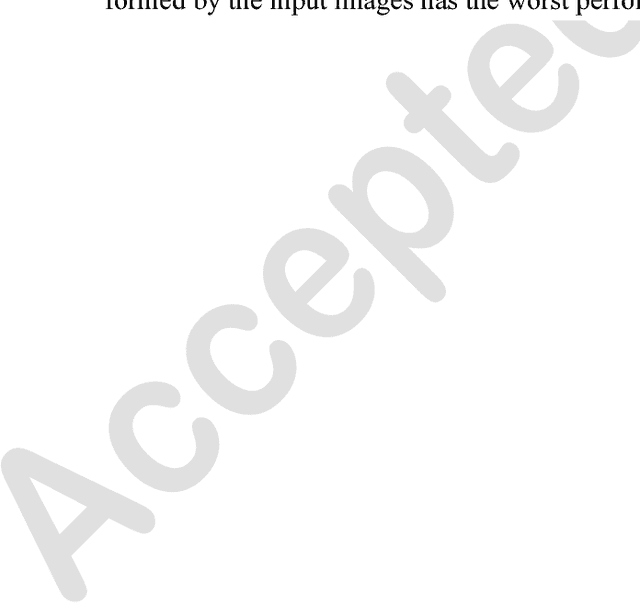


Abstract:Phase recovery from intensity-only measurements forms the heart of coherent imaging techniques and holography. Here we demonstrate that a neural network can learn to perform phase recovery and holographic image reconstruction after appropriate training. This deep learning-based approach provides an entirely new framework to conduct holographic imaging by rapidly eliminating twin-image and self-interference related spatial artifacts. Compared to existing approaches, this neural network based method is significantly faster to compute, and reconstructs improved phase and amplitude images of the objects using only one hologram, i.e., requires less number of measurements in addition to being computationally faster. We validated this method by reconstructing phase and amplitude images of various samples, including blood and Pap smears, and tissue sections. These results are broadly applicable to any phase recovery problem, and highlight that through machine learning challenging problems in imaging science can be overcome, providing new avenues to design powerful computational imaging systems.
 Add to Chrome
Add to Chrome Add to Firefox
Add to Firefox Add to Edge
Add to Edge